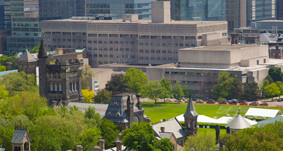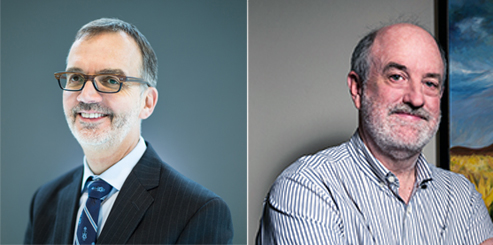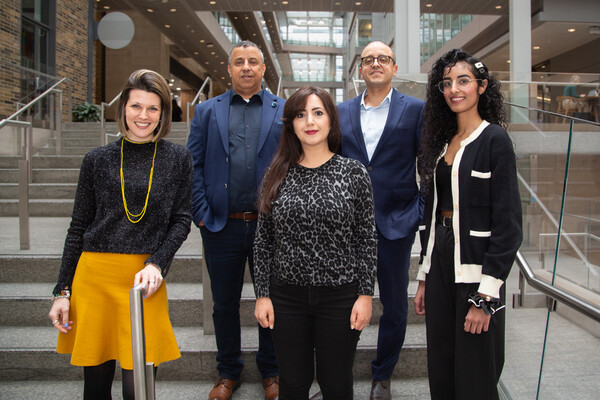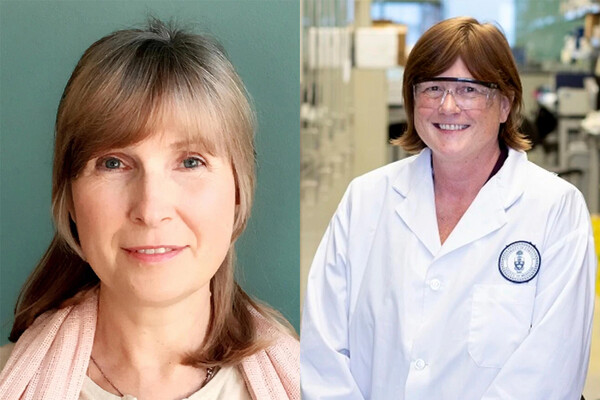The Legacy of Past Decisions

A Message from Trevor Young and Scott Mabury
 When the Medical Sciences Building (MSB) first opened, nearly 50 years ago, it represented the best thinking at the time. It emphasized individual wet labs and traditional bench sciences. It also used construction processes and materials that were thought to be at the pinnacle of building science. But times change, our models for research adjust and our knowledge about occupational health has advanced. However, we continue to live with decisions made a half century ago.
When the Medical Sciences Building (MSB) first opened, nearly 50 years ago, it represented the best thinking at the time. It emphasized individual wet labs and traditional bench sciences. It also used construction processes and materials that were thought to be at the pinnacle of building science. But times change, our models for research adjust and our knowledge about occupational health has advanced. However, we continue to live with decisions made a half century ago.
As part of an effort to ensure MSB meets the current needs of our research community, we are undertaking a major renovation thanks to a historic investment by the federal and provincial governments. First announced in July 2016, the Lab Innovation for Toronto (LIFT) project will enable U of T to invest $190-million to upgrade nearly half of U of T’s research labs by April 2018 — including projects in MSB valued at $40-million. This will provide much needed improvements to our facilities. The University’s policy is to conduct asbestos abatement whenever major renovations occur. The aim is to reduce the presence of asbestos, once widely used, from U of T buildings over the coming years.
As we commenced work in MSB, we undertook the necessary asbestos abatement process to prepare labs for further renovation. However, as has been detailed in a message sent earlier today from Scott, abatement-related dust was found in some labs. Our top priority is to ensure our students, faculty and staff are able to learn, work and conduct research in safe conditions. Based on all of the information we have received to date, there is no reason to prevent normal operations from proceeding in MSB, except in the labs we have closed out of an abundance of caution. As was reported on March 31, air sampling tests completed by an independent third-party found MSB is “safe for general occupancy.” This involved more than 200 air samples taken in and around the building from February 4 to March 24, 2017. Since then, over 130 more samples have been taken, and representative sampling continues daily. The Ministry of Labour has performed three site visits to date. In their reports, which are posted on the Environmental Health and Safety (EHS) website, there have been no orders to take steps above what the University is already doing.
Over the last few weeks, there has been some criticism that the University has not adequately addressed this situation. First, let us define who “we” are and the roles we play in this situation. As Dean, Trevor’s role — on behalf of the Faculty of Medicine in these circumstances — is to ensure the concerns of the U of T Medicine community are appropriately addressed. As Vice-President of University Operations, Scott oversees many of the relevant University-level units that have jurisdiction over these issues, including Capital Projects, which manages construction on campus, and Facilities & Services, which oversees property management. Together, we ensure the work of the Faculty can be conducted in a safe environment.
Since construction powder contaminated with asbestos was first detected in MSB, we have heard concerns expressed about the speed and scope of communications. When the first incident was reported, the existing protocol was followed, in which a notification was issued to the Faculty of Medicine’s MSB Joint Health and Safety Committee and the occupants directly affected. When we became aware of an additional incident, we expanded the distribution of messages to include all MSB occupants. We have now expanded the scope of our communications to ensure a weekly message is sent from Trevor to all departments and units providing an update on events, as well as timely messages from Scott. We have also created an online information hub — www.uoft.me/msb — where all news and messages on this topic are posted. We have heard the call for improved communications right from the start. We are committed, as part of our on-going consultations, to get feedback from departments and units on ways to do better should there be any future events.
We have also committed to ensuring that all of the air and dust test results that are being generated from MSB be available to members of the University community. While EHS has made that information available now, we have heard your concerns about the way in which this information is presented. You don’t find it user-friendly, so we’re working to improve the way this information is displayed. You will hear more on this in the near future. We are also continuing to make improvements to the FAQ based on your feedback and additional questions you have raised in consultations with us and other members of our teams. If you have questions that you don’t see addressed, please contact EHS at ehs.office@utoronto.ca.
Among the benefits of the breadth and depth of this University is our ability, in situations like this, to call upon the expertise of colleagues to assist us. One of those people is Dr. Ray Copes, a professor at the Dalla Lana School of Public Health, who specializes in environmental and occupational health. He has been advising the University throughout this process to help us best understand the public health risk posed by these events. We have also engaged the services of The Pinchin Group, engineering consultants, who are investigating how the construction dust travelled within the building. The experience of these experts is supporting the ongoing efforts of the University’s team of professionals in addressing this situation.
Throughout these events, we have been meeting with any groups worried about working in MSB out of concern for their health and safety. That commitment will continue (please contact your department chair or supervisor if you’d like to schedule a meeting). We want to ensure your concerns are addressed and that you are confident U of T will always make your health and wellbeing a top priority.
Trevor Young
Dean, Faculty of Medicine
Vice-Provost, Relations with Health Care Institutions
Scott Mabury
Vice-President, University Operations
Professor of Environmental Chemistry
News


